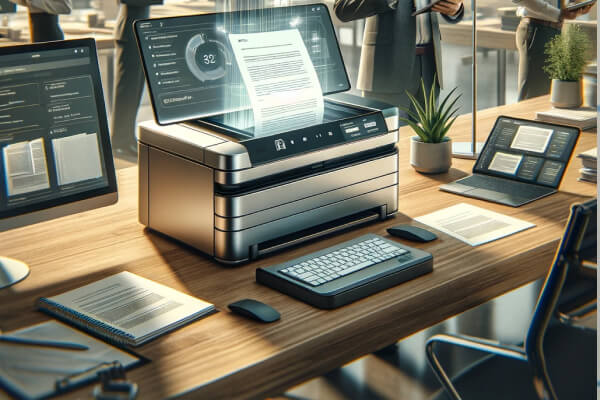Once you’ve realized the obvious savings in time, space, and cost of digitizing your paper documents, it’s time to start scanning. Files can be saved in
a number of ways and saved in a number of formats (e.g., PDF, TIFF, JPEG). Planning this all out beforehand will ensure a seamless document scanning project.
Below, we’ll walk you through several easy document scanning steps that will have your workspace decluttered and your critical data a search query away in no time. But don’t let that fool you into thinking it’s a complete breeze. Your desktop scanner may work for a document or two, but digitizing an entire file cabinet — or an entire office — requires bigger tools. In fact, choosing between outsourcing the project or doing it in-house is an important early step — but we’ll get to that later. (Hint: PairSoft can help you decide what’s best for you.)
1. Make a plan
Proper planning will make each step go smoothly, and it will help you get a better understanding of the scope of the task that lies before you.
- Rules and regulations: Most legal processes now accept images of documents in place of paper, but the secure storage of these images is often highly regulated. Make sure you know the requirements of the sector and situation you’re operating in.
- Safe storage options: Choose the file format that best suits your needs. Factors will include portability, file sizes, compatibility, and your team’s own workflow. You can consult with PairSoft if you have questions.
- Post-process paper waste: Once your files are all scanned and indexed, what are you going to do with all that paper?
2. Audit
With a plan in place, it’s time to audit your documents. Know the type of documents you have and the amount. It’s important to classify stored documents to ensure you meet and security and compliance regulations. Equipping yourself with accurate numbers will help you plan and estimate your timetable and costs.
3. In-house or outsourced?
This is a critical decision, and it will largely depend on the size of the project and the equipment you’ve got.
Do you have optical character recognition (OCR) software? You’ll need it to make your newly scanned documents are text searchable. If it isn’t an investment you want to make right now, outsourcing might be your best bet. Calling around for price estimates is a good first step. Weigh outsourcing against staff time, training, equipment costs, and your general workload outside of the scanning project.
4. Prep work
Grab your staple remover and your white-out. Smooth out creases. Make sure you’re labeling the new, digital files in a way that will enable you to easily cross-reference them with the old ones in case the need arises. You may also need to transcribe hand-written notes that are hard to read.
5. Saving files
Choosing how to save the files involves knowing how many there are and how large each file is. A shared company drive works until the project is too big, causing slowdowns and low available storage space. Other options include external hard drives and CDs. Your most-used documents should be easily accessible.
6. Dispose old documents
Now it’s time to get rid of the sad old documents that you waited so long to go digital. This can actually be cathartic, and once you’re finished, you’ll be able to enjoy all that extra space in the office. Shredding or pulping documents is a smart way to make sure sensitive information is never lost or picked up by nefarious actors.
Those are the basic steps, in broad outline. If you’re still feeling overwhelmed, feel free to give PairSoft a call. Our cutting-edge software can also help you transition seamlessly into a paperless office. Schedule a free personalized demo to learn how.
Download Our White Paper!
You only need one great reason to make a positive change; we have nine! Read our white paper and learn the Top 9 Reasons to Go Paperless! Download now!





